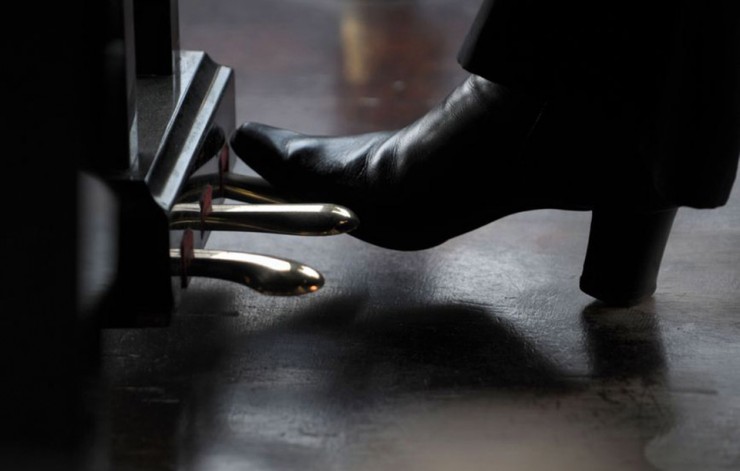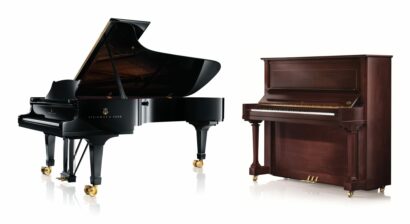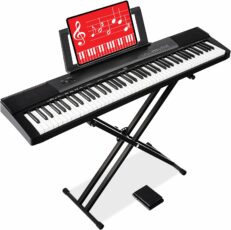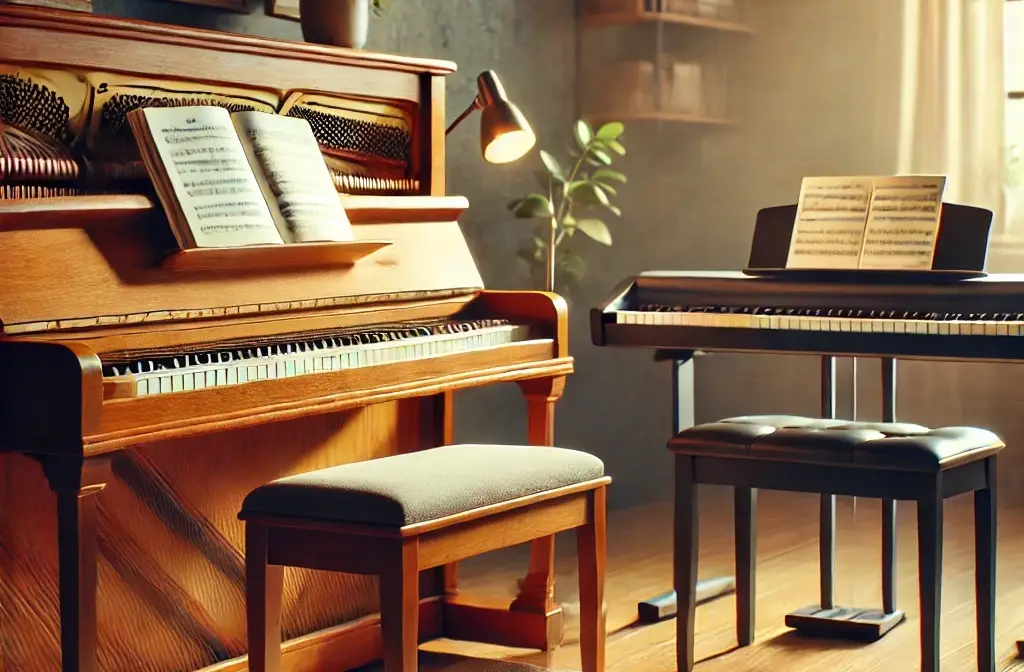If you’ve recently started learning the piano, you may be practicing on a digital piano. Digital pianos are a great introduction to the instrument, but as you progress, you might wonder if an acoustic piano could offer more benefits for your piano skills development. In this post, we’ll explore why practicing on an acoustic piano can take your skills to the next level, helping you grow as a musician.
Table of Contents
Piano Skills Development
Developing piano skills is a multi-faceted journey that involves more than just learning to play notes. It encompasses building finger strength, enhancing coordination, improving musicality, and mastering techniques. Each aspect plays a vital role in becoming a proficient pianist.
While digital pianos serve as an excellent starting point for beginners, transitioning to an acoustic piano can significantly enhance your skills. Acoustic pianos offer a tactile experience and dynamic response that digital pianos may not fully replicate, fostering deeper engagement and growth in your musical abilities.
Touch and Dynamics
One of the first things you’ll notice when playing an acoustic piano is the way it responds to your touch. Unlike digital pianos, where the keys often feel uniform, acoustic pianos have keys that offer more resistance. This helps you develop better control over dynamics, which refers to the ability to play both soft and loud notes with accuracy.
For example, if you’re playing Beethoven’s “Moonlight Sonata” the ability to softly press the keys in the quieter sections can make a huge difference. The feedback you get from an acoustic piano helps you develop this skill more effectively than a digital piano can. While some digital pianos allow you to adjust volume, they can’t replicate the subtle changes that an acoustic piano offers through touch.
Pedal Sensitivity

If you’ve started using the sustain pedal on your digital piano, you may have noticed that it either holds all notes or doesn’t. Acoustic pianos give you much more control over the pedal. You can “half-pedal,” which means lightly pressing the pedal to sustain notes just a little, creating a more nuanced sound.
This becomes important when you play pieces like Chopin’s “Nocturnes” where slight pedal adjustments are needed to maintain smoothness between notes. This kind of precision is easier to achieve on an acoustic piano because the pedals are directly connected to the strings and dampers, providing real-time feedback and control.
Sound Quality and Resonance
A big reason many pianists eventually switch to an acoustic piano is the sound quality. Acoustic pianos produce sound naturally through vibrating strings, and this creates a rich, full sound that’s hard to mimic digitally. When you press a key on an acoustic piano, the strings not only produce the note you played but also cause other strings to vibrate sympathetically, adding layers to the sound.
For instance, if you play Rachmaninoff’s “Prelude in C-sharp minor” the depth and fullness of the sound on an acoustic piano enhance the emotional intensity of the piece. On a digital piano, the sound might feel flat or less immersive. Practicing on an acoustic piano helps train your ear to appreciate these rich harmonics, which is essential as you advance in your playing.
Building Finger Strength
As a beginner, you may not think about finger strength much, but it’s a crucial part of becoming a better pianist. Acoustic pianos usually have heavier keys compared to digital ones, which forces your fingers to work harder. Over time, this builds muscle strength and dexterity, which is vital for playing more complex music.
For example, playing fast arpeggios or challenging pieces like Liszt’s “Hungarian Rhapsodies” requires strong, nimble fingers. If you practice only on a digital piano, where the keys are lighter, you might not develop the same level of strength and endurance. Acoustic pianos naturally strengthen your fingers with daily practice.
In addition to regular piano practice, using a hand exerciser can further enhance your finger strength and agility. These devices are designed to help musicians build the necessary muscle required for better performance. Incorporating a hand exerciser into your routine can complement your piano practice and lead to more rapid improvements.
No products found.
Emotional Connection to the Instrument
One of the less technical but equally important aspects of playing the piano is the emotional connection you form with the instrument. Acoustic pianos have a unique character—they’re dynamic, alive with sound, and can evoke emotions that might feel muted on a digital piano. You feel the vibration of the strings, and the depth of sound surrounds you, creating a more intimate playing experience.
Take Debussy’s “Clair de Lune” for example. On an acoustic piano, the soft tones resonate beautifully, allowing you to express more emotion. This can make your practice sessions more rewarding, as the acoustic piano connects you to the music in a way that’s hard to replicate digitally.
In Closing

Acoustic Piano Pros and Cons
| Pros | Cons |
|---|---|
| Rich, natural sound and resonance | Higher cost than digital pianos |
| Better control over dynamics and touch sensitivity | Requires regular tuning and maintenance |
| Builds finger strength through heavier, weighted keys | Heavier and less portable |
| More precise pedaling control (half-pedaling) | Takes up more space in your home |
| Deeper emotional connection with the instrument | Volume cannot be adjusted (can be too loud for some settings) |
Digital Piano Pros and Cons

| Pros | Cons |
|---|---|
| More affordable and portable | Limited dynamic range and touch sensitivity |
| Doesn’t require tuning or regular maintenance | Less realistic sound and lack of resonance |
| Can adjust volume and use headphones | Lighter keys, which may not build finger strength as well |
| Can adjust the volume and use headphones | Less precise pedal control (limited to basic sustain) |
If you’re thinking about upgrading from a digital piano, an acoustic piano can significantly improve your playing experience and piano skills development. From better control over touch and dynamics to richer sound and increased finger strength, the benefits of an acoustic piano are hard to overlook. It’s an investment that will not only help you grow as a pianist but also deepen your connection to the instrument and the music you love.
Whether you’re still exploring your options or ready to make the switch, keep in mind that acoustic pianos offer an unparalleled experience that will serve you well as you progress in your piano journey.
